
Masaki Tamura
Рождение : 1939-01-26, Hirosaki, Aomori, Japan
Смерть : 2018-05-23
История
Masaki Tamura (たむら まさき, Tamura Masaki, 26 January 1939 – 23 May 2018) was a Japanese cinematographer.
Born in Aomori Prefecture, Tamura early on worked at Iwanami Productions (Iwanami Eiga), where. as an assistant, he helped photograph documentary films. He became a full-fledged cinematographer working on many of the documentaries of Shinsuke Ogawa. At the same time, he began photographing feature fiction films by directors such as Kazuo Kuroki, Yōichi Higashi, and Toshiya Fujita. He particularly became known for his collaborations with Mitsuo Yanagimachi. After working with many famous directors such as Juzo Itami, Sōgo Ishii, Gō Takamine, Kiyoshi Kurosawa, and Kaizō Hayashi, he began working in the 1990s with a new generation of directors, such as Nobuhiro Suwa, Naomi Kawase, and Makoto Satō. His collaborations with Shinji Aoyama were notable in his final years.
In 1982, he won the Mainichi Film Award for best cinematography for the film Farewell to the Land. The same year, he won the best cinematography award at the Yokohama Film Festival for Farewell to the Land and A Japanese Village - Furuyashikimura.
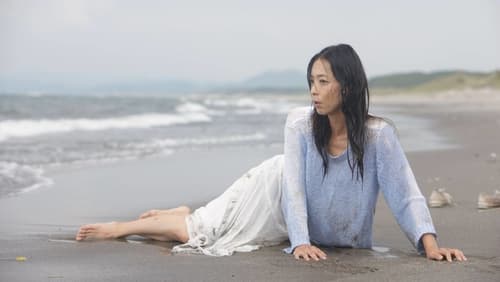
Cinematography
Ninomiya Azusa is a depressed elementary school teacher in Tokyo, who has problems both at work and in her personal life. One day, she suddenly hears a voice saying "If you go to Imore Island, you will get what you want.", so she decides to give it a try.
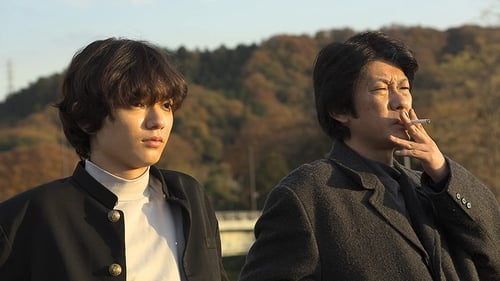
Director of Photography
Saki and Toshi were born and raised at the shabby "Drive in Gamo," located on the side of a road. Their father was a yakuza but he was kicked out of the group. Because of their father, Saki and Toshi were known as being part of the idiot family. Saki in desperation with her life became a troubled kid. She got pregnant and ran away from family. But one day, Saki who suffered from physical violence by her husband, comes back home.

Director
Saki and Toshi were born and raised at the shabby "Drive in Gamo," located on the side of a road. Their father was a yakuza but he was kicked out of the group. Because of their father, Saki and Toshi were known as being part of the idiot family. Saki in desperation with her life became a troubled kid. She got pregnant and ran away from family. But one day, Saki who suffered from physical violence by her husband, comes back home.
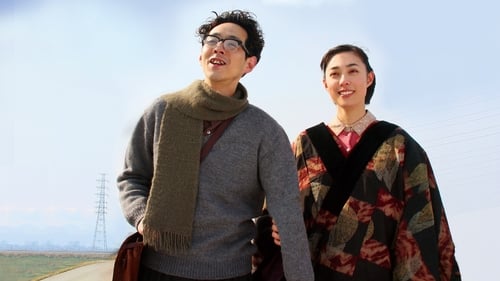
Director of Photography
Фильм посвящен юности Сигэру Мидзуки, автора знаменитого комикса «Гэгэгэ-но Китаро» в жанре ёкай (комиксы о сверхъестественных существах), и его жены Нуноэ Мура. Фильм снят по автобиографии Нуноэ Мура, но ограничивается тем периодом, когда молодой художник, потерявший левую руку на войне, и его жена, познакомившаяся с ним за пять дней до свадьбы, сообща начинают прокладывать путь в жизни, пытаясь выбраться из нищеты и утвердиться в столице.
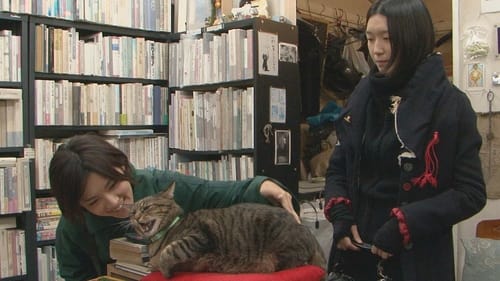
Director of Photography
Haru works at a part-time job for a bookstore. Her dream is to become an illustrator and she also loves cats. One day, after a cat named Chibutomu disappears from the bookstore Haru canvasses the neighbourhood in search of Chibutomu.
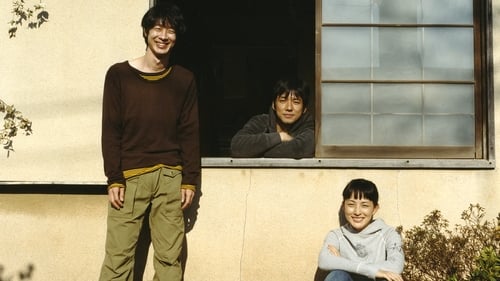
Director of Photography
A salaryman debates selling his grandfather's land to pay off his father's debt.

Director of Photography
"Shadow of Sand" - Set in Tokyo in the 1980's. Yukie, a young woman lives with the vision of the lover she has murdered. After his death he continues to appear in her room. Yukie maintains her usual life, trying to avoid discovery of her crime until a new lover turns up.
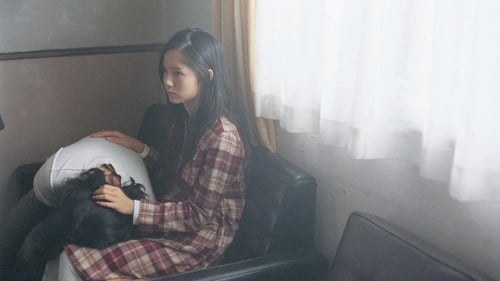
Director of Photography
Kenji Shiraishi is involved in the trafficking of illegal immigrants from China to Japan. One such case leaves an immigrant child to be an orphan. Instead of selling him along with others that arrived, Kenji flees with the boy to look after him and make an attempt at everyday life. The people after the boy, unexpected encounters with long-lost family members, and his vengeful nature are standing in the way of his future.

Camera Operator
"AA" is a documentary about Akira Aida (mostly known as Aquirax Aida), a japanese music critic who introduced free jazz, improvisation, and progressive rock to Japan. It's based on interviews with 12 critics and musicians who had connections with him. This is a documentary that considers the past, present and future of improvisation.

Director of Photography
Kaoru, a wealthy woman whose youth is fading, abandons the hustle and bustle of the city to live a peaceful life in a house on the coast. There she takes care of an old deaf, dumb and blind man as if he were an insect, a child or a pet. He can’t do anything for himself, so she feeds him and accompanies him on his walks. This strong mutual dependency offers Kaoru an escape from society and allows her to free herself from restrictions imposed by common sense.
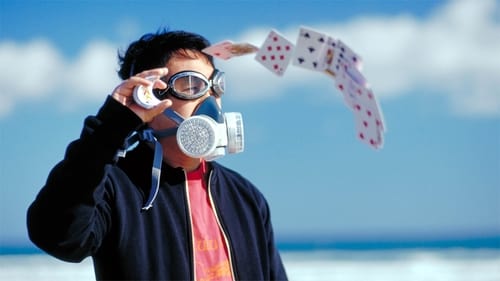
Director of Photography
2015 год. В мире свирепствует странный вирус, который, проникая в мозг человека, заставляет его покончить с собой. В Японии уже убили себя 10 миллионов человек. Нет никакого способа бороться против этой инфекции, несущей страх и отчаянье. Средства массовой информации называют эту болезнь «синдромом лемминга»... Мизуи и его напарник – музыканты-авангардисты. Они создают музыку-шум, извлекая ее из всего, что им удается найти. Они, кажется, не замечают происходящих вокруг них событий, пока к ним не приезжает некий стареющий магнат со своим телохранителем и своей внучкой. Внучка заражена вирусом. Оказывается, на концертах Мизуи и его друга заболевшие исцеляются. Магнат просит их исцелить его внучку, но музыканты поначалу не решаются ответить ему согласием, потому что не верят в благополучный исход дела.
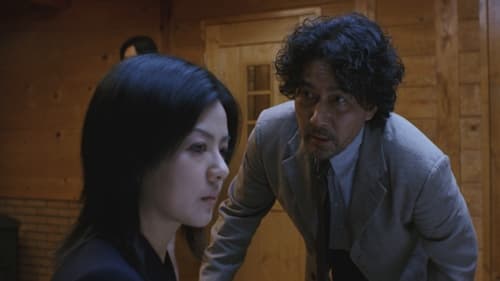
Director of Photography
Three couples are staying at a lakeside cottage with their children. They want them to prepare intensely for a prestigious high school's entrance exam with the help of a private tutor. One night, one of the wives confesses to her husband that she has killed his mistress.
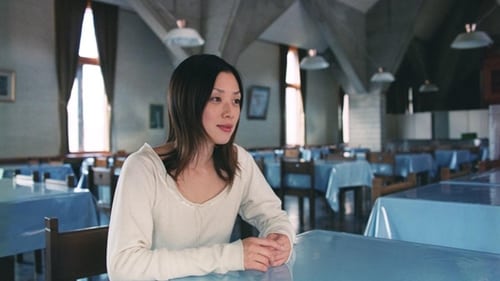
Director of Photography
Private detective Mike takes on an assignment to return a girl, who is set to marry into a prestigious family, from a mysterious commune in the forest.
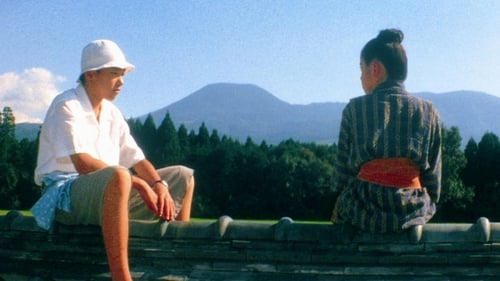
Director of Photography
Commencing well-respected Nippon director Kazuo Kuroki's sixth decade behind the camera, "A Boy's Summer in 1945" (literally "A Beautiful Summer in Kirishima") is a lyric, novelistic drama set in the countryside in the last days before Japan's surrender ending WWII. Striking a welcome retro note in its languid pacing and delicate handling of seriocomic ensemble threads, handsome production is a natural for fests. It might also prove a cornerstone for retrospectives or ancillary releases of works by a helmer ("Preparation of the Festival," "Ronin-gai") who's long been appreciated at home but has won just limited attention abroad.

Director of Photography
The ostensible subject of this film is the growing, drying, peeling and packaging of persimmons in the tiny Japanese village of Kaminoyama. The inhabitants explain that it is the perfect combination of earth, wind and rain that makes their village’s persimmons superior to those grown anywhere else, including the village just a few miles away. The film’s larger subject, however, is the disappearance of Japan’s traditional culture, the end of a centuries-old way of life.

Director of Photography
Kenji Nakagami, one of the most notable Japanese writers of the post-war, died in 1992. His work reveals a strong connection to his homeland, Kishu: a mountainous region that connects to the Pacific Ocean through a river. "To The Alley" (alternative title) is a documentary about Kenji's life. Incorporating 16 mm images from the writer's personal archive and adding new footage, director Shinji Aoyama travels through the paths of the life and art of the Japanese writer.
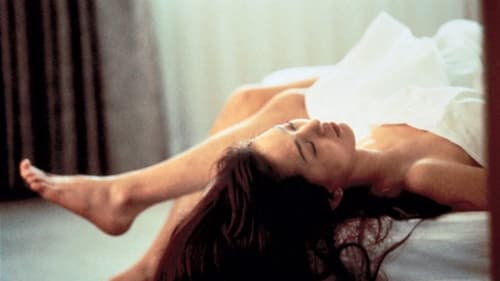
Director of Photography
A successful businessman and his alcoholic wife attempt to piece together their unhappy lives and shattered marriage. Little do Nagai and Akira know that their precarious relationship will soon be transformed by a stranger, the enigmatic Keechie.
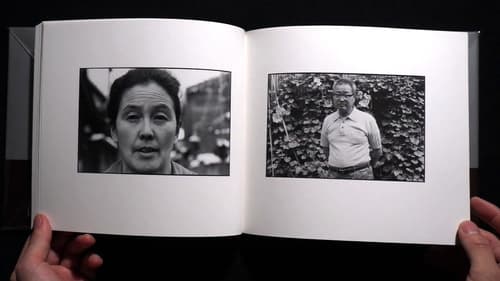
Director of Photography
In 1983, photographer Gocho Shigeo met an early death at the young age of 36. The view we see reflected in Gocho’s photographic images has become more profound over time since his death and has struck a chord in people’s hearts. While focusing on Gocho’s collection of photographs Self and Others, the film also visits places associated with him, creating a collage with the manuscripts, letters, photographs and voice recordings remaining in an attempt to capture “one more gesture”—a theme pursued by Gocho through photographic expression. This film is neither a critical biography nor a monograph on the photographer. Rather, we are offered a new perception. As if mesmerized, the photographs Gocho left behind captivate us in their gaze.

Director of Photography
Рассказ о нескольких отверженных: шофере автобуса, подозреваемом в совершении преступления, двух детях-сиротах, их кузене - случайном студенте. Судьба, однажды случайно соединившая героев в одной точке, сводит их вновь.

Director of Photography
Rika, a bright, attractive, and driven young woman, is intent on marrying her dreamy boyfriend Seiichi Ono who is not only tall and handsome but also an up-and-coming executive. One day, Ono abruptly dumps her.

Director of Photography
Japanese drama set in a southern Kyushu island where dance-troupe leader Shinji (Shinji Arano) stays on as his touring troupe departs. After Shinji moves in with an old man (Nobuyoshi Tanigawa) cared for by his granddaughter (Reiko Matsuo), he becomes an apprentice to the old man's construction of a wooden boat
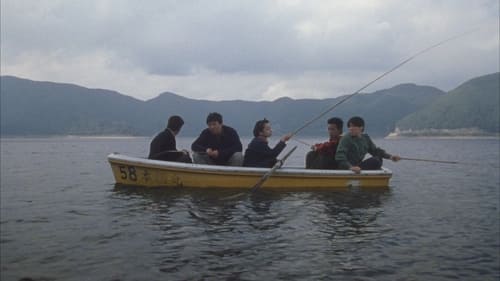
Director of Photography
С того дня, как простой офисный служащий Нидзима нашёл труп своей 10-летней дочери, прошло долгих шесть лет... Вместе с женой они пробовали преодолеть боль утраты, сохраняя детскую комнату нетронутой и делая вид, что дочь жива... Жене казалось, что всё течёт складно, однако Нидзима в душе жаждал мести... После шести лет тайных поисков, ему наконец удаётся найти парня, который мог быть причастен к убийству его дочери. Сперва Нидзима надеется легко добиться от него раскаяния, но в конце концов пытками доводит парня до смерти...
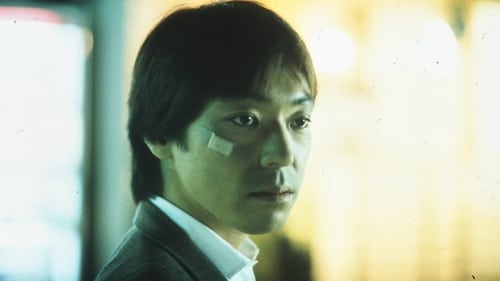
Director of Photography
Miyashita, a former low-level yakuza member, has tracked down and kidnapped his daughter's murderer with help of his friend Nijima. But others are soon implicated in the death, leading the pair further down a violent path of revenge.
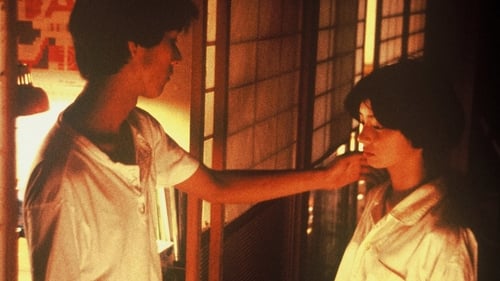
Director of Photography
Depicts the life of a family in a remote Japanese timber village. Family head Tahara Kozo lives with his mother Sachiko, wife Yasuyo, nephew Eisuke and young daughter Michiru. Economic recession and failed development plans cause tragedy in the family.

Director of Photography
The slow collapse of the relationship between an out-of-work actor and his girlfriend.
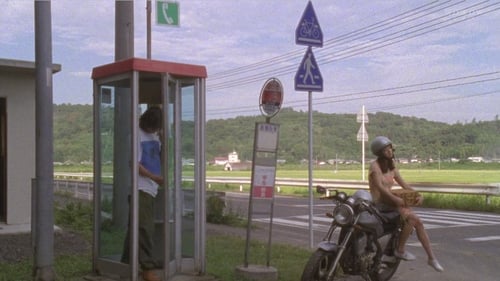
Director of Photography
Выйдя из тюрьмы, якудза Ясуо узнаёт от бывшего соратника, что его босс убит, а банда прекратила существование. Однако Ясуо не верит товарищу и отправляется на поиски подставившего его босса, предварительно поручив старому знакомому Кэндзи заботиться о своей психически неполноценной сестре Юри. Однако, Кэндзи не всегда так спокоен и уравновешен, как кажется на первый взгляд.

Director of Photography
Three brothers, their father missing and tensions boiling, gather at their rural summer house; soon enough, they're unexpectedly joined by a female cousin.

Director of Photography
Resulting pic blurs the line between documentary and fiction as Yanagimachi explores the lives of a couple of groups of peddlers, and they appear to act out their personal dramas for the camera.

Director of Photography
Jigoku-gokuraku-maru is a samurai on the run. One bounty hunter hoping to collect the sizeable reward is Teppo Oyuri, a comely lass who is an ace shot with her pearl-laden pistol. Before she can set her sights on Jigoku-gokuraku-maru, he is attacked by a hoard of sword-wielding thugs also hoping to collect the reward. He dispatches them with bloody aplomb. Later, Jigoku-gokuraku- maru and Teppo Oyuri -- who has fallen for the master swordsman in spite of herself -- ventures to Zipingu -- the Land of Gold -- in search of a magical gold sword.

Director of Photography

Director of Photography
A magical realist story of the legendary Okinawan hero Untamagiru participating in efforts to form an independent Okinawa before the island was returned to Japan in 1972.

Director of Photography
Ведущая ночной передачи о всякого рода странностях получает кассету с реалистичным убийством. Она определяет место съемки — заброшенный военный завод, и отправляется туда вместе с съемочной группой. А на месте телевизионщиков поджидают хитроумные смертельные ловушки.

Director of Photography
The movie compiles footage taken by Ogawa Production for a period of more than ten years after the collective moved to Magino village. Unique to this film are fictional reenactments of the history of the village in the sections titled "The Tale of Horikiri Goddess" and "The Origins of Itsutsudomoe Shrine". Ogawa combines all the techniques that were developed in his previous films to simultaneously express multiple layers of time—the temporality of rice growing and of human life, personal life histories, the history of the village, the time of the Gods, and new time created through theatrical reenactment—bring them into a unified whole. The faces of the Magino villagers appear in numerous roles transcending time and space—sometimes as individuals, sometimes as people who carry the history of the village in their memories, sometimes as storytellers reciting myths, and even as members of the crowd in the fictional sequences.

Director of Photography
Chief Detective KIMURA Denbei, fondly referred to as Smoky Denbei, is a legendary figure at the Metropolitan Police Department. Transferred to Denbei's Criminal Investigation Division 1, Detective KUMADA Tomekichi arrives from the Toyama Prefectural Police. KUMADA is disconcerted by Denbei's position that murderers nowadays do not need a plausible motive, but gradually adapts to Denbei's unusual methods of investigation.
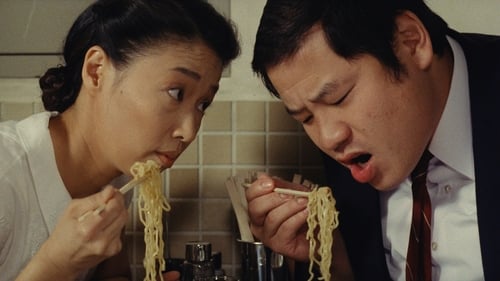
Director of Photography
Лихой водитель грузовика в ковбойской шляпе помогает симпатичной вдове превратить её скромную лапшичную в заведение, куда люди стали приходить из других кварталов. Он и его товарищи помогли ей узнать рецепты блюд, научиться мастерски их готовить, изменить интерьер заведения.

Director of Photography
Tatsuo, a reverent lumberjack, seeks to disrupt plans to build a marine park on his family land, instead promoting his traditions in reactionary ways.

Director of Photography
The Kobayashi family finally get the chance to move out of their tiny, cramped Tokyo apartment in favour of the suburban house of their dreams. But all is not well: the house is infested by termites and the family starts cracking up: Son Masaki is studying so obsessively for his exams that he's losing his mind; daughter Erika is oblivious of all but her forthcoming record company audition, grandfather Yasukuni starts getting World War II flashbacks and father Katsuhiko is so worried about his family's "sickness" that he thinks can only be cured by group suicide.
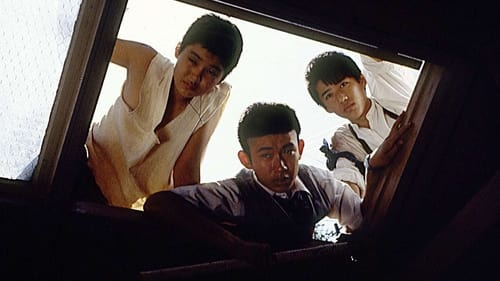
Director of Photography
Three high-school students tangle with indulgent yakuza and lackadaisical police as they set out in search of the class bully, who has been kidnapped.

Director of Photography
This is Ogawa Productions’ first major film from their Yamagata period. They had already started photography on Magino Village -A Tale but they were drawn to this village deep in the high country above Magino when a particularly cold bout of weather threatened crops. Inevitably, their attention strayed from the impact of weather and geography on the harvest to the “life history” of Furuyashiki Village. On the one hand, Ogawa returns to his roots by playing with the conventions of the science film. At the same time, he discovers a local, peripheral space in which to think about the nation and the state of village Japan. From this “distant perspective” in the very heart of the Japanese mountains, Ogawa discovers a village still dealing with the trauma of global warfare and struggling for survival as their children flee for the cities.

Director of Photography
A college student has an affair with a married, middle-aged teacher.

Director of Photography
Yukio is an ex-farmer working as a dump-truck driver in Kashima. Haunted by the drowning of his two young sons, whose names he has had tattooed on his back in penance, and locked in a sibling rivalry with his traditional but urbane younger brother who lives in Tokyo, Yukio has become an amphetamine-addicted loner at odds with his family, friends and colleagues.

Director of Photography
This rural documentary features poet Jin Makabe. Thoughts about agriculture, memories, landscapes.

Director of Photography
This biopic is centered on New Year's Day of 1894, when Kitamura is recovering from a suicide attempt. Japan is then under the spell of fervent patriotism because the government wants to build up public support for a war with China. Kitamura's literary friends and militant comrades come to visit. They wonder why Kitamura wants to kill himself. Kitamura at first refuses to receive them, then he sits down with them and looks back on his days as a civil rights militant, his stormy love life and his ardent but destructive desire to live literature to the full.

Director of Photography
In the mid-1970s, protests were waning across Japan after the Red Army scandal of Asama Cottage. In Sanrizuka, people were weary of the violence and the airport was well under construction. As for Ogawa Productions, they invited criticism by pulling out and moving to a quiet village in northern Japan. But when protesters back in Sanrizuka erected a tall tower at the end of one runway, they sent a crew to document what happened. This became the final film of the Sanrizuka Series.

Director of Photography
Omnibus about three actresses from different generations

Director of Photography
Story of the last three days in the life of Sakamoto Ryoma (1836-1867), imperial loyalist who tried to unite the Choshu and Satsuma clans and prepared the way for the Meiji Restoration (1868).

Director of Photography
Действие картины разворачивается в Японии в конце 19-го века. Четверо бандитов убивают мужа и маленького сына женщины по имени Саё Кашима. Женщину заберет себе один из бандитов, который будет использовать ее для своих любовных утех. Однажды она убьет его и отправится в путь, чтобы разыскать и отмстить оставшимся трем, но, к сожалению, ее арестуют и дадут пожизненный срок. Теперь она не сможет отомстить, поэтому решает завести ребенка и для этого ложится под всех тюремных надзирателей без разбора. Вскоре она забеременеет и у нее родится девочка, которую она назовет Юки — ребенок, рожденный для мести. После родов Саё умрет, а девочку заберет, выходящая на волю, сокамерница. Девочка попадает в руки к учителю-монаху, который сделает из нее профессионального убийцу. И вот спустя годы Юки выходит на тропу мести.

Director of Photography

Director of Photography
Shinsuke Ogawa documentary about the life of the farmers in Heta Village opposing their resettlement due to the construction of Narita Airport.

Director of Photography
The third film in Ogawa Productions’ Narita/Sanrizuka series of documentaries about the resistance by farmers and activists to the construction of the Narita Airport.

Director of Photography
It's the mid 60s. Tokyo needs a new airport. There isn't anywhere in Tokyo to put it, so the government decides on displacing some adjacent villages. The peasants of these villages are not having it. What results is a remarkable act of protest and civil disobedience.

Director of Photography
In 1968 the plan by the government to construct a new international airport in the fields of Sanrizuka near Tokyo unleashed one of the most important and enduring social upheavals in the history of postwar Japan. The plan sought to evict thousands of farmers from their lands without any sort of respect for the locals’ rights. Their resistance to eviction was met with extreme violence by the police. Activists from all over the country, including thousands of students, joined with the farmers in their mounting struggle. As the combats in Sanrizuka became more intense and the numbers of police increased, the collective became more involved in the fighting. Sanrizuka: The Three Day War was what Ogawa called a “bullet film”, an immediate and powerful piece of agitprop shot in three days and intended to be seen as quickly and widely as possible. Credit: ICA London

Director of Photography

Director of Photography
In 1968, Ogawa decided to form Ogawa Productions and locate it at the newly announced construction site of Narita International Airport in a district called Sanrizuka. Ogawa chose to locate his company in the most radical of the villages, Heta. Some farmers immediately sold their land; others vehemently protested and drew the support of social movements across the country. Together they clashed with riot police sent in to protect surveyors, who were plotting out the airport. Summer in Sanrizuka is a messy film – its chaos communicating the passions and actions on the ground.

































